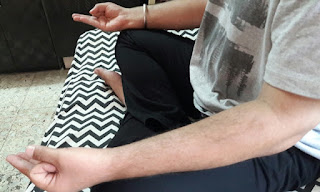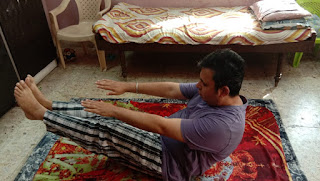Vayu Mudra and Its Benefits
 |
| Vayu Mudra |
 |
| Vayu Mudra |
Vayu means air.Vayu hand mudra takes care of all the diseases and irregularities that occur due to air imbalance. Vayu mudra takes care of the air element in the body. This mudra will control or regulate the movement of air inside our body. This will make our body healthy in the long run.
How to do Vayu Mudra
- Wear loose and comfortable clothes. Relax yourself.
- Sit in a comfortable position on a yoga mat or bed.
- Place the tip of your index finger at the base of thumb.
- Apply little pressure on your finger with thumb. Thumb represents fire element and index finger represents air element.
Benefits of Vayu Mudra
Vayu mudra is linked with Ayurvedic vata dosha which is associated with air element.
It is useful for people who are of vata dosha or who suffer from aggravated vata dosha.
- It helps balance and regulate air element in the body.
- It reduces the tremors in people who suffer from Parkinson’s disease.
- It helps to calm people who are suffering from stress and anxiety. It calms a stressed nervous system and soothes the mind. It can help to relax people who are over excited.
- It is said to be helpful in general pain management.
- It is helpful to soothe joint pain associated with rheumatism, sciatica or gout.
- Vayu Mudra or Vayu-Shamak Mudra clears voice problems, allows rehydration of skin and aritcular cartilage.
- Practice Vayu Mudra in Vajra Asana if you feel uneasy after a meal.
- Vayu Mudra is beneficial in Gas, Bloating and flatulence.
- By practicing Vayu Mudra we can overcome Hormonal imbalance of endocrine glands.
- This Mudra is also helpful in Neck Pain and Spinal Pain.
Duration of doing Vayu Mudra
- Vayu mudra can be practiced for 30 to 45 minutes daily to get best results. It can be done any time or in any pose. It is suggested to do it early in the morning. In can be done while doing meditation also. This will give quick results.
Precautions
Do not do this mudra after you get the desired results.
Read Also: Vajrasana for Weight and Stomach Issues



Comments
Post a Comment